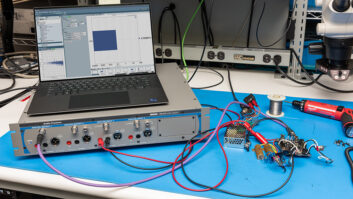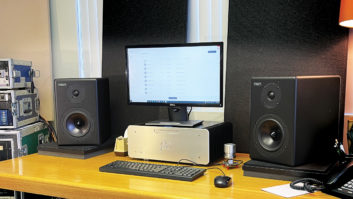
New York, NY (May 12, 2021)—Allen Sides may be most closely associated with the various Ocean Way Recording studios where artists and producers like Michael Jackson, Quincy Jones, Green Day, Beck, Ray Charles, Frank Sinatra, Wynonna Judd and more recorded classic albums, but the famed audio entrepreneur started out by building loudspeakers at age 13. In fact, his first studio began as a garage (yes, located near the beach on Ocean Way) where he demoed speakers for clients. “I built the studio not so much because I intended to record music per se, but I wanted impressive sounding material to make my speakers sound good,” he says. “I ended up recording about 50 albums in that garage, but I sold a lot of speakers as well.” Fast-forward nearly 50 years, multiple legendary studios and more than 1,000 album credits later, and Sides is still in the audio business and building speakers as the CEO of Ocean Way Audio.
Ocean Way Audio has been designing monitoring systems for the last 10 years, initially starting out with “extremely huge speakers,” but today, the company has evolved to provide speakers in a variety of sizes that evoke the same sonic picture of those larger systems. Likewise, the company’s clientele has expanded beyond the realm of recording studios. “A very big direction for us are Atmos theaters; these are high-end and we do these all over the world—it is a very big market for us,” Sides says. “We also have a large audiophile clientele, and we do a lot of in-home recording set ups.”
The company still does a lot of custom work for clients with very specific needs and will manufacture a speaker for a particular project. “That is something we are always doing—just creating new products,” he says. “As far as manufacturing goes, we do all of our cabinetry in our own plant, then it all comes back here to our warehouse in Burbank, where everything is assembled, balanced and adjusted before it is packed and shipped out to customers.”
Flying Lotus Lands on Ocean Way Monitors
When it comes to design and engineering, there are three main figures involved: Bruce Marion, who has been the chief engineer at Ocean Way Recording for 36 years; Cliff Henricksen, chief designer and an MIT physicist; and Ernie Woody, director of Production Operations, who manages all the production and follow-through along with the sales team.
With the economy always changing, Sides says that currently his company’s biggest markets are residential home studios and theaters, though it also does a fair number of large-scale private theater installations. “We are making greater headway into the professional home and project studio environments and making even smaller high-performance speakers,” he says. “The premise of the smaller speakers was that we needed something even smaller than our HR5s, that you could just put next to a computer monitor. The idea is that you could wear them like headphones if you chose to. The crossover is so symmetrical that you could be listening from one foot away and not hear two separate components—there is one sound and the crossover is inaudible.
“But we are also doing larger Atmos projects. We just finished a 48-channel surround system at the Riviera Theater, which is at the center of the Santa Barbara Film Festival. The system features 11’ high and 7’ wide speakers and the front screen channels are +/- 1 dB from a 19 kHz to 20 Hz each channel. I don’t think anybody has done this before, and it is a revolutionary system.”
Whether Ocean Way Audio is creating massive or miniscule speakers, the key factor uniting all its products can’t be found in the hardware—it’s Sides’ insights, experience and first-hand knowledge, which informs each speaker’s creation and sound. “As an engineer, producer and studio owner, I understand what something should sound like from an engineer’s standpoint,” he said. “I think I have a different perspective than someone who is strictly technical, even though I am also technical. In the end, it is all about whether the sound is giving me something that I need emotionally and whether I am satisfied. Since I am so emotionally involved with the sound of our products, they have to sound great. I have no interest in mediocrity and I want our speakers to sound insanely good. That is my thing, and I guess that’s the essence of our culture.”
Ocean Way Audio • www.oceanwayaudio.com







